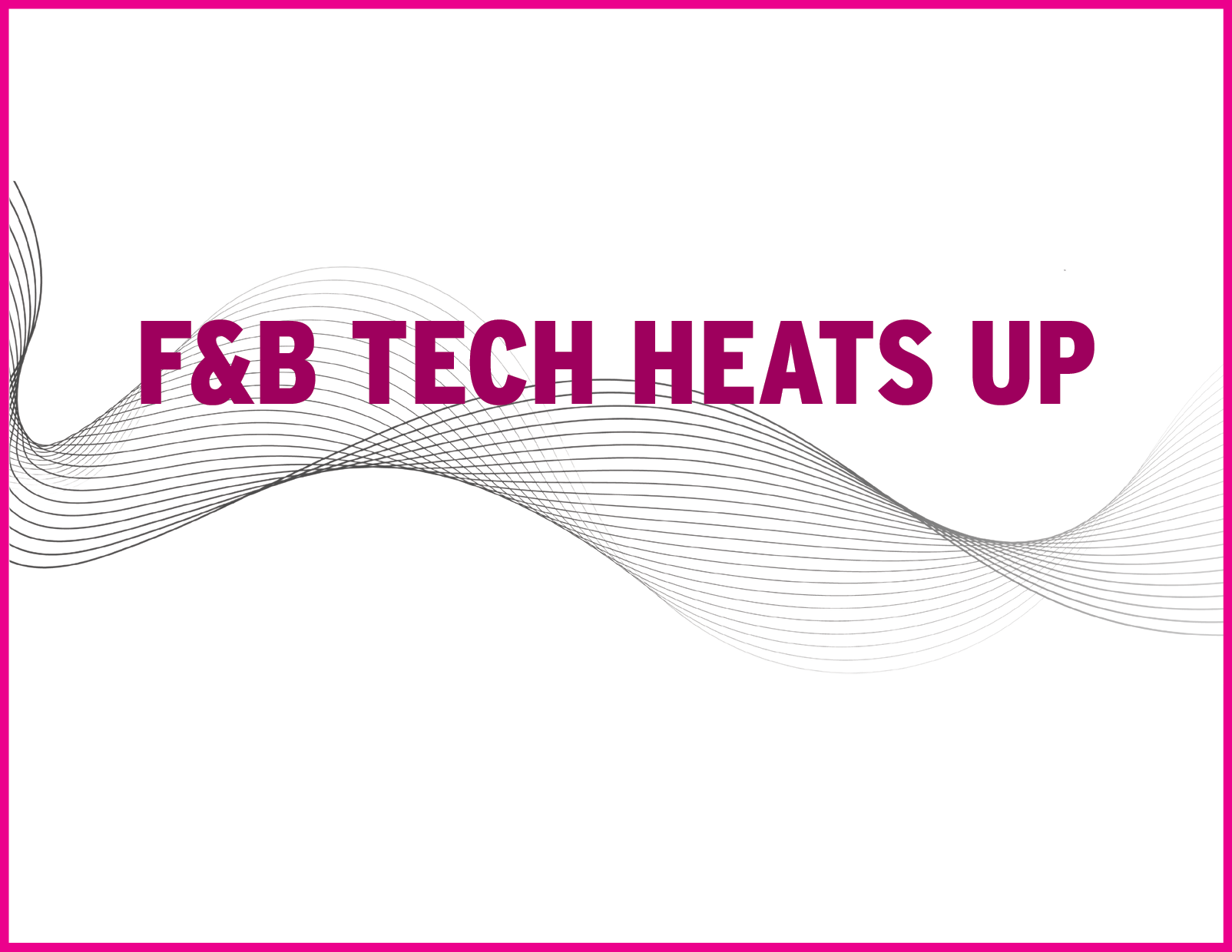“What’s the next big thing in F&B tech? Where should we be implementing innovation?” These are the most common questions our hospitality consulting team hears these days.
They are usually delivered with a mix of curiosity and desperation, as if I’m about to unveil a secret quantum device that will eliminate staffing issues, make inventory inexplicably balance itself, and turn resort F&B operations into a seamless utopia of efficiency.
Spoiler alert: there’s no electronic wizardry, no app store silver bullet, and no all-knowing AI chef to save the day.
There is, however, technology out there that brings with it potential efficiency gains and cost savings, and contributes to an improved guest experience. First, identify what you’d like to accomplish, and include your staff in that process. Then go looking for solutions.
Know, though, that integrating innovation in F&B isn’t always a smooth ride. Tech integration is often met with resistance and all too often misunderstood, so feared. Thus, it can be risky from both an investment and cultural perspective, and if handled wrong, it can do more harm than good.
Ironically, the challenge isn’t just the tech itself—it’s a people problem.
The Disconnect: Tech as a Top-Down Fantasy
Operators tend to possess a “Hail Mary” mindset that tech will be the secret weapon that wins the game. But they forget that it’s still the players on the field who need to implement, execute, and champion the tools being used. The success of any tech rollout depends more on culture, training, and leadership than the platform itself. Just because “there’s an app for that” doesn’t mean it will produce the promised results.
Most resort tech initiatives start at the executive or, potentially, the IT level. They are driven by a desire to improve efficiency, reduce costs, and elevate the guest experience. From a boardroom perspective, the idea of digital transformation checks every strategic box. But translating those initiatives into the unpredictable, high-pressure reality of a resort kitchen or bar is a whole different beast.
Chefs, bartenders, and servers operate in environments where seconds matter. If the system slows them down, breaks their rhythm, or doesn’t clearly improve their day-to-day life, it becomes a rejected and vestigial appendage.
Take, for example, a well-known resort (name withheld) that installed digital kitchen screens to streamline communication and replace handwritten tickets. The rollout was hyped. But in reality:
- Glare from overhead lights made the screens unreadable.
- Minimal training left the kitchen staff guessing.
- Quick notes and special requests couldn’t be entered easily.
- Line cooks used tongs to tap screens, leaving grease stains and scratches.
- Kitchen cleaning agents damaged the screens within weeks.
Two weeks later, the resort went back to paper tickets. A very expensive lesson. And one that also potentially hinders any future tech implementation due to the lingering distaste of the failed undertaking.
This isn’t an isolated incident. From smart lockers to QR-code ordering, the list of promising tools that have flopped at any given resort is long—not because the tools were poorly built, but because they weren’t integrated thoughtfully into the operation.
Culture vs. Convenience: Where Adoption Fails
Tech adoption isn’t about plugging in a device or launching a new platform. It’s about shifting behavior. At ski resorts, the challenge is magnified by seasonal turnover. High churn, tight onboarding windows, and burned-out teams juggling multiple roles means that introducing new tech is likely to be met with suspicion or outright rejection.
Some of the most common barriers to adoption include:
- “We’ve always done it this way.” Translation: Don’t mess with our system, even if it’s archaic and held together by duct tape and habit; it works for us.
- Tech fatigue. Most frontline staff already juggle POS systems, digital menus, scheduling apps, inventory trackers, and communication apps like Teams, Slack, and Notion. Add another layer? Good luck.
- The trust gap. Many employees assume new systems are just another way for employers to monitor, micromanage, and track their performance.
- Poor training. Nothing kills adoption faster than tossing a system into an operation without a clear “how do we use this” plan.
When it comes to introduction and implementation, successful operators shift the initial focus away from tech and toward culture. They involve staff early, communicate clearly, provide hands-on training and support, and ensure the new system helps—not hinders—the day-to-day grind.
Success Story: The Slow and Steady Rollout
The forced rollout of kitchen display screens at that previously mentioned resort led to chaos. Ticket times increased. Morale dipped. Staff ignored the screens and went rogue.
So, the resort regrouped and slowed down the integration. Sometimes in tech, slow is fast—at least when it comes to sourcing, proposing, and implementing.
The course-correction included:
- Involving lead chefs and bartenders from the start to help test and troubleshoot.
- Creating gamified training modules and video walkthroughs on YouTube.
- Encouraging feedback with open communication channels.
- Piloting the screens in high-volume locations—because if it works well there, it’s more likely to be embraced everywhere.
The approach shifted aversion into advocacy. Staff began asking when the system would expand to other areas. The lesson: If you want buy-in, you need to earn it.
Success Story: AI in the Bar
Another resort implemented AI-powered inventory tracking across several bars. But the real breakthrough wasn’t in the tool—it was in how the resort introduced it.
Rather than presenting it as a management tool to cut costs, leadership sold it as a benefit to the staff:
- “You’ll never run out of key ingredients mid-shift.”
- “You won’t have to guess when placing weekly orders.”
- “You’ll have real-time data to help you upsell better and make more tips.”
The pitch worked. Bartenders bought in. The system delivered. And costs were controlled as a natural byproduct—not the headline.
Success Story: Smart Equipment & Training
When we talk about tech, we often default to apps and platforms. But smart equipment such as combi ovens, programmable fryers, and automated cocktail dispensers are quietly revolutionizing operations.
These tools reduce training time, improve consistency, cut down cleaning and maintenance, and extend product and equipment lifespan.
This tech doesn’t eliminate the need for training, though. One resort installed more than $120,000 in high-end equipment, but no one showed the staff how to use it. The result? These powerful units became glorified soup warmers. That’s not innovation—that’s an ROI nightmare, and one of the reasons CFOs are often reluctant to approve significant spends in F&B spaces.
But when those same tools are implemented with a clear strategy and proper onboarding, they become productivity engines. One well-executed training program turned the resort’s combi ovens from idle appliances into the backbone of the kitchen’s efficiency.
Tech on the Horizon: What’s Next?
Here’s something no one wants to say out loud: many resort kitchens are far behind in tech. And resorts don’t want anyone to know.
I’ve had executives make me pinky-promise not to mention their outdated systems to anyone. They’ll open up about their challenges only if I swear to keep it off the record—like I’m in some kind of tech witness protection program.
“The restaurant industry is always first to be last when it comes to technology,” one GM admitted.
The most common excuse? “We’re a people business.”
The implication is that using technology somehow diminishes hospitality. But the irony is that the best tech supports hospitality. It doesn’t replace it—it strengthens it.
Technology in resort F&B isn’t slowing down. If anything, it’s about to outpace many operators’ ability to keep up.
Here’s what’s coming:
- AI Forecasting: F&B demand predictions based on weather, guest flow, event schedules, and historic data.
- Dynamic Menu Pricing: Prices that flex like lift tickets during peak periods.
- Self-Ordering and Contactless Payments: Streamlined guest experiences, especially for grab-and-go and scramble areas, such as “walk in/walk out” technology that uses facial recognition, Bluetooth, sensors and AI to track items and automatically charge customers, allowing them to bypass traditional checkouts.
- IoT-Connected Equipment: Remotely managed smart ovens, self-cleaning fryers, and equipment with live digital diagnostics.
- Personalized Guest Experiences: Data-driven menu suggestions based on previous visits, dietary preferences, and even ski pass usage.
- Sustainability Tech: Automated composting, food waste tracking, and energy-efficient kitchens.
These aren’t futuristic concepts—they’re here now, being tested and piloted at progressive resorts, stadiums, and even cruise lines. Early adopters will have a distinct advantage not only in terms of efficiencies but in making life easier for their teams. The resort that is both tech-savvy and worker-considerate is also likely to have a competitive advantage in talent recruitment and retention.
Getting Started: A Practical Playbook
Not sure where to start? Here’s a simple roadmap to get ahead of the curve:
1. Audit Your Existing Tech Stack
- What’s being used? What’s being ignored?
- Is anything redundant, outdated, generating friction, or collecting dust?
2. Talk to Your Team
- Gather feedback before implementing anything new.
- Ask what they need—not about what vendors are selling.
3. Start Small and Scale
- Pilot in one area first.
- Document and broadcast wins.
- Tweak. Expand.
4. Invest in Training, Awareness, and Understanding
- Educate and inform before dropping tech on staff.
- Make training digestible, ongoing, and accessible.
- Gamify it. Play helps learning and buy-in.
5. Think Beyond Software
- Smart equipment can often deliver the biggest wins with the fewest headaches.
6. Build a Culture of Curiosity
- Reward staff who find and champion new tools.
- Create space to test and learn without fear of failure.
Tech Won’t Save You, But It Can Support You
Technology can’t fix broken systems. It only amplifies what’s already happening. If your team isn’t trained, your culture is resistant, or your leadership is detached, tech will expose those gaps—not solve them.
Getting it right. The resorts that are winning in this space do three key things:
1. They invest in tech to solve real problems—not because it’s trendy.
2. They engage their teams early and often.
3. They treat tech as a living, evolving ecosystem—not a one-and-done rollout.
So, before you sign that next purchase order or get seduced by a slick demo, ask yourself: Will this make life easier for the people using it? Will it elevate the guest experience and empower our staff?
If the answers are yes, then you’re heading in the right direction.





